

Dr. Ajoian uses the latest technology to help diagnose and treat eye conditions, such as dry eyes. This problem can be a chronic or temporary condition that occurs due to the fact that your eyes aren’t able to produce enough tears to keep them from drying out. Oftentimes, this can be due to the tear film not being able to keep natural tears from quickly evaporating. No matter what’s causing this issue, we offer a variety of solutions for dry eye management in our Belmont, MA optometry office custom-tailored to fit your needs and provide you with relief.
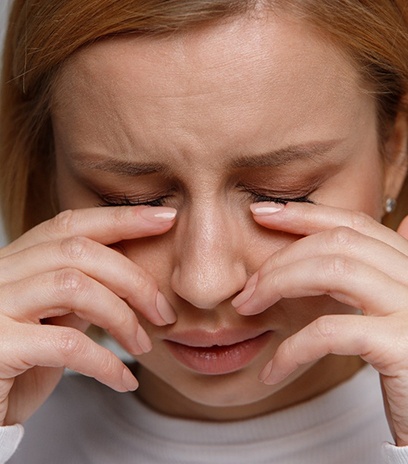
The symptoms of dry eye usually affect both eyes, but they can affect them one at a time as well depending on the cause. Below is a list of some of the most common symptoms that you might notice:
If you’ve noticed any of the above signs and symptoms of dry eyes for a very long time, we highly recommend making an appointment as soon as possible. We have a number of options for diagnosing and treating the problem.
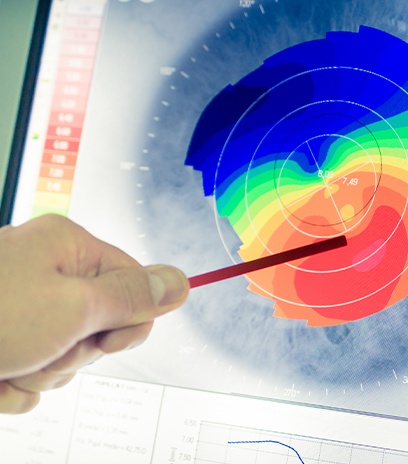
We utilize an advanced instrument called an Oculus Keratograph 5M Topographer to help measure the tear film dynamics. The tear film is a thin layer of fluid that covers the outer surface of the eye, preventing your natural tears from evaporating and causing dry eyes. It also measures thousands of points on the corneal surface to select the best specially-fitted contact lenses to help prevent rapid moisture evaporation.
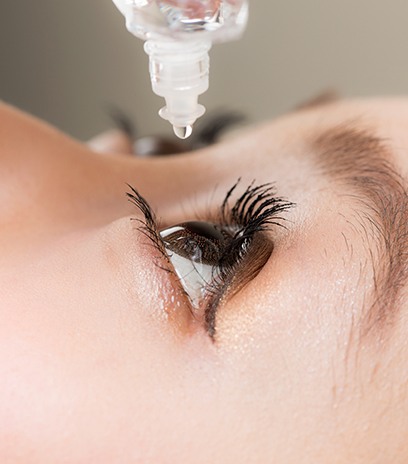
For more mild cases of dry eyes caused by being on the computer or reading for prolonged periods of time, artificial tears and over-the-counter lubricating eye drops can help provide you with much-needed moisture.
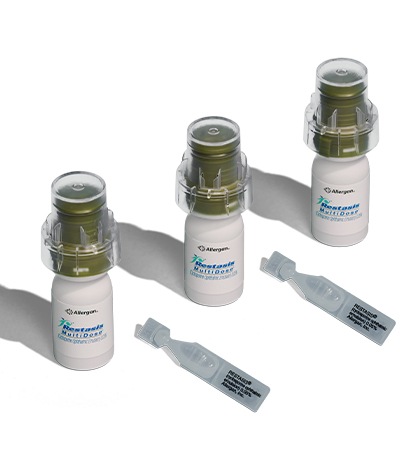
Instead of over-the-counter products, we may recommend daily use of prescription eye drops called Restasis. It lubricates your eye while simultaneously reducing inflammation and increasing your production of natural tears.
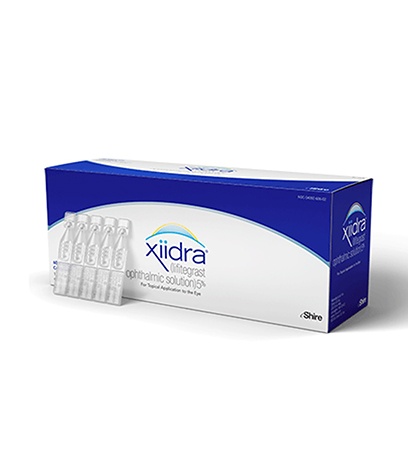
Xiidra is another type of prescribed eye lubricant that is created to reduce symptoms of dry eyes. You’ll apply the drops twice each day, about 12 hours apart, Within two weeks you should notice a significant reduction in dry eye.
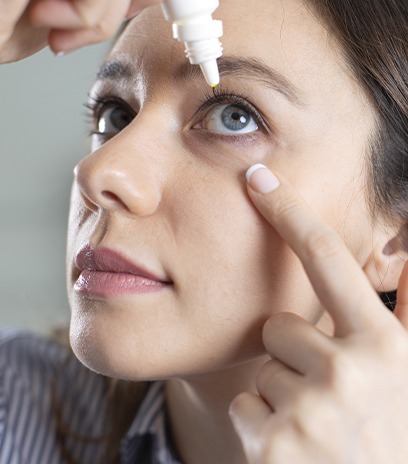
According to studies conducted over the last several years, inflammation has been targeted as a significant cause of symptoms of dry eyes. Steroid eye drops can be used as short-term solutions to redness and burning.
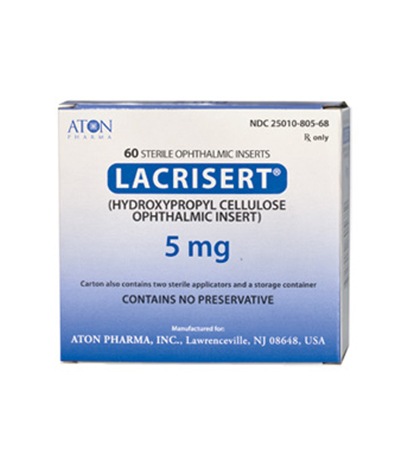
Lacrisert is a sterile lubricant that is placed underneath the lower eyelid that will slowly liquify over the course of the day, providing a lasting moisturizing effect. It’s typically only applied once a day and has been proven to relieve dryness, burning, and itching.
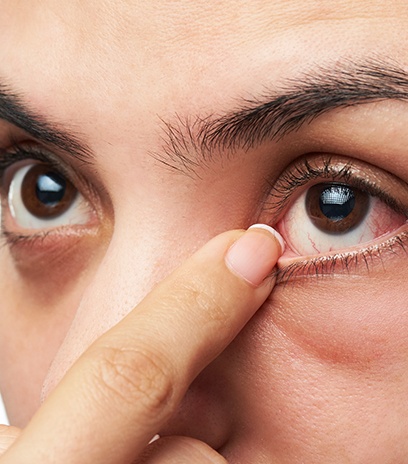
Punctal plugs are occasionally recommended to help your eye maintain tears for longer periods of time, providing lasting moisture. They’re small devices that are inserted into small openings of tear drainage ducts so tears will no longer drain away from the eye.
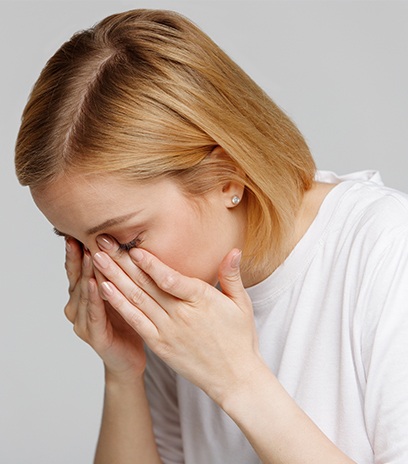
The meibomian glands located along your eyelids produce a special oil that keeps your tears from rapidly evaporating. Sometimes, they can become clogged, resulting in dry eyes. Dr. Ajoian can perform an in-office meibomian gland expression to help them function properly again.
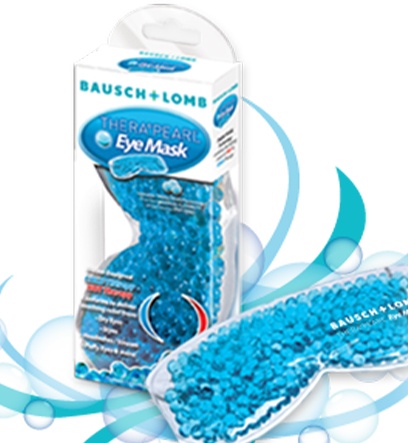
Another easy way to express meibomian glands is to apply a warm compress on your closed eyelids at home to soften them. This will help unclog them and allow them to produce more oil. Your local pharmacy also has great options! Dr. Ajoian recommends TheraPearl Eye Mask by Bausch+Lomb or Bruder Dry Eye Masks.
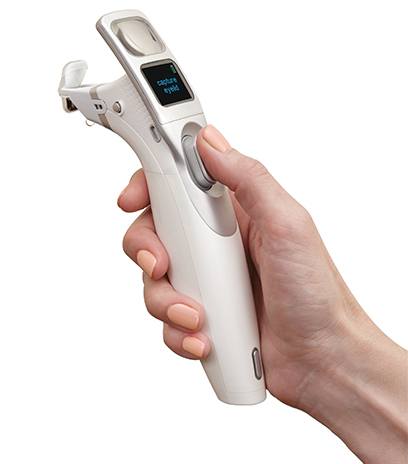
iLux® is an in-office dry eye treatment that uses light-based heat to unclog the trapped oils within the glands and relieve dry eyes. This special system utilizes warm compress therapy to warm two spots on each eye and express trapped oils.
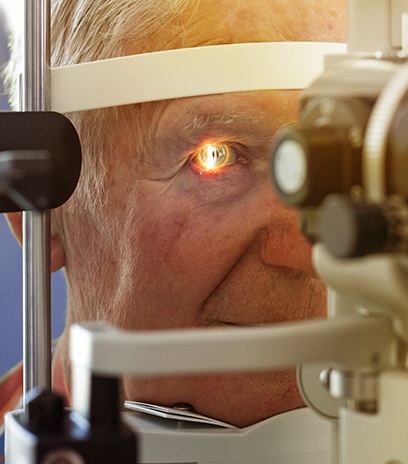
Intense pulsed light is a trusted, FDA-approved treatment for rosacea on the eyelid that can cause pain and dry eye symptoms. IPL offers an advanced therapy alternative to make patients less reliant on artificial tears.
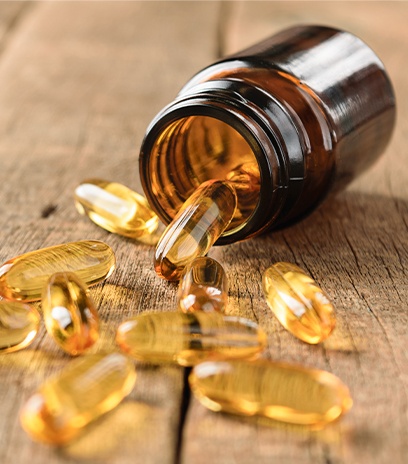
Nutritional supplements like omega-3 fatty acids have been shown to reduce the symptoms of dry eye. By drinking plenty of water and adjusting your diet, you can find holistic relief.
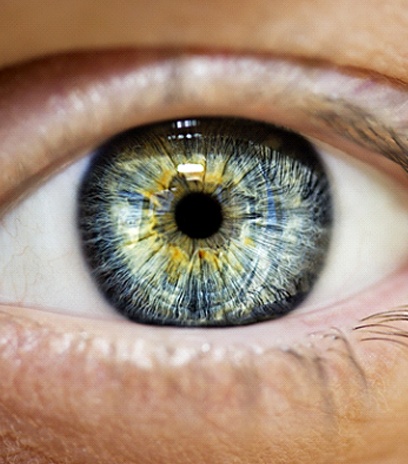
Dry eye may occur when the meibomian glands that produce the oils needed for quality tears are inflamed and not functioning properly. OptiLight® is a noninvasive way to treat this issue; with precise pulses of light aimed below the eyes, we can reduce the inflammation, improve the function of the glands, and increases tear break-up time (meaning it helps tears last longer on your eyes between blinks). This is an FDA-approved solution for dry eye that’s backed by over 20 clinical studies.
Dry eye is sometimes the result of the meibomian glands in your eyelids becoming blocked, which is a condition known as MGD. The meibomian glands are responsible for adding oil to your tear film; without that oil, the film will evaporate faster than it should, leading to dry eye symptoms. With iLux, we can clear the blockage of the meibomian glands so that the oil can be added to your tears again. iLux works by applying heat to your eyelids, melting the oil that’s clogging the glands. The procedure can be completed very quickly; it only takes about 8 to 12 minutes to treat both eyes.
One possible cause of dry eye is blepharitis, a condition where the oil glands near the base of the eyelash are clogged and coated with bacteria and oily particles. This is often the result of bacteria living near the eyelashes forming a biofilm that gets thicker over time. Blephex is a state-of-the-art device that gently cleans the eyelashes and removes any biofilm that might be causing the blockage. The treatment takes about 10 minutes, and patients often see a significant improvement in eye comfort after about a day.
Lumenis OptiLight is the only IPL (intense pulsed light) treatment approved by the FDA to manage dry eye caused by MGD. Precise pulses of light are aimed at the area below the eyes to reduce inflammation and remove bacteria that might be causing a blockage. This allows the meibomian glands to function properly again and resume adding oil to your tears to help them last longer. The treatment usually involves about 4 sessions spaced 2 to 4 weeks apart. Each session lasts about 10 to 15 minutes.
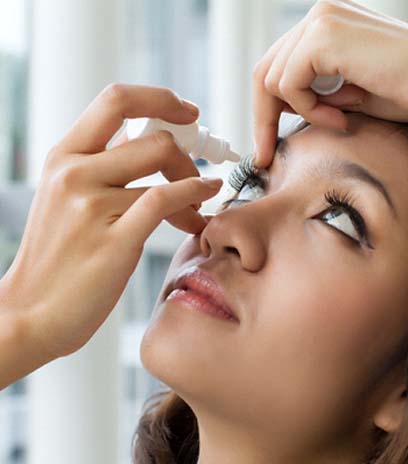
When you visit Dr. Ajoian for help with your dry eyes, it’s important to take the opportunity to ask any questions you might have about your condition. The more you know about it, the better prepared you’ll be to deal with it in the future. We’ve taken the time to answer some of the most common questions our patients have had in the past. Do you not see the answer you’re looking for below? Our team is ready to help if you call our office.
Dry eye is actually classified as a syndrome rather than a disease. A disease usually has a single defining cause and distinguishing symptoms, but a syndrome refers to a group of symptoms that have more than one possible cause. In the case of dry eye, the root cause may be related to other underlying disease, specific disorders, or even aspects of your own lifestyle. Regardless of the cause, though, the issue is still the same: your eyes aren’t getting the hydration they need from your tears. We focus on identifying the nature of your dry eye syndrome so that we can offer a proper treatment solution.
Dry eye doesn’t pose in any immediate damage, but it can have consequences over the long run if you don’t manage it properly. Potential complications include:
If you don’t want dry eye to have a negative impact on your life, you should call our office immediately once you start noticing the symptoms.
A comprehensive eye exam can tell us a lot about the current health of your eyes. We’ll review your overall health history to look for contributing factors to your current condition. Numerous tests can be performed to measure the volume and quality of your tears. For example, blotting strips of paper can be placed under your eyelids for five minutes; we can then measure the amount of the strip that was soaked in order to determine tear production.
Depending on the cause of dry eyes, you may be able to take steps to prevent your symptoms. For example, you can:
I Need a Comprehensive Eye Exam I am Looking for Eyeglasses or Frames I am Interested in Designer Frames I am Interested in Contact Lenses I Need Therapeutic Contact Lenses I Have an Eye Emergency I Need Myopia Treatment I Need Help with Eye Disease Management View Our Optometry Services View Our Dental Services